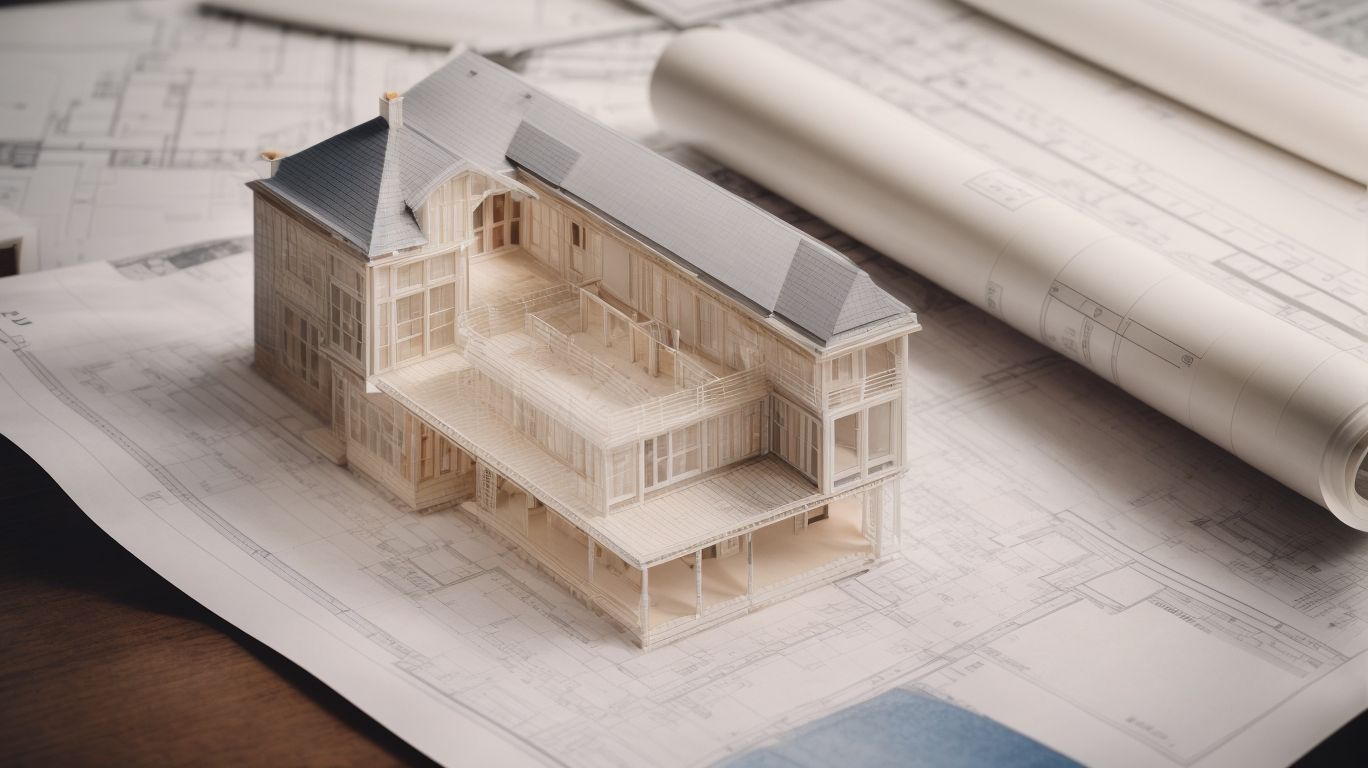
Environmental Impact and Sustainability in SF Remodeling Projects
Are you considering a remodeling project for your home? It’s important to think about the environmental impact of your renovation and how to make it more sustainable.
In this article, we will explore the concept of sustainable remodeling, why it’s important, and the environmental impacts of remodeling projects. We will also discuss practical ways to make your remodeling project more sustainable, and the benefits of doing so.
Whether you’re a homeowner or a contractor, you’ll find valuable insights on how to incorporate sustainable practices into your remodeling projects here.
What Is Sustainable Remodeling?
Sustainable remodeling refers to the practice of renovating or improving structures using eco-friendly design, sustainable materials, and green construction practices to minimize the environmental impact.
This approach prioritizes renewable resources, energy efficiency, and low-impact construction methods, ultimately aiming to create healthy living spaces while reducing the carbon footprint.
Sustainable remodeling often involves repurposing existing materials, incorporating natural light, and utilizing energy-saving technologies to promote a more sustainable living environment. By embracing green building techniques, such as efficient insulation, water-saving fixtures, and renewable energy systems, the overall sustainability of buildings can be greatly enhanced, contributing to a healthier planet for future generations.
Why Is Sustainable Remodeling Important?
Sustainable remodeling is crucial due to its significant impact on environmental sustainability, playing a pivotal role in mitigating climate change and reducing overall environmental impact.
Sustainable remodeling allows for the use of eco-friendly materials and energy-efficient appliances, reducing the carbon footprint of buildings.
By incorporating sustainable design principles, such as utilizing natural light and improving insulation, it can decrease energy consumption and greenhouse gas emissions.
Additionally, sustainable remodeling promotes recycling and reusing materials, making a positive contribution to waste reduction.
These efforts collectively contribute to creating healthier living environments and a more sustainable future for our planet.
What Are the Environmental Impacts of Remodeling Projects?
Remodeling projects have various environmental impacts, including energy consumption, water usage, and effects on indoor air quality, contributing to the overall environmental impact.
During construction, projects can lead to higher energy consumption as power tools, lighting, and HVAC systems are often in use. Additionally, water usage may increase due to the need for water-intensive materials and more frequent cleanups. Furthermore, the release of volatile organic compounds (VOCs) from construction materials can compromise indoor air quality and potentially harm occupants and the surrounding environment.
Waste Generation
Waste generation is a significant concern in remodeling projects, emphasizing the need for sustainable development practices and retrofitting to minimize environmental impact.
Proper waste management is crucial as renovation projects often produce a substantial amount of debris, including materials such as concrete, wood, and metal. Challenges arise in handling and disposing of these materials responsibly.
Implementing strategies such as source reduction, reuse, and recycling can effectively minimize the waste generated. It is also essential to collaborate with waste management companies to ensure that materials are appropriately sorted and disposed of in line with sustainable practices. By prioritizing waste reduction and efficient disposal, remodeling projects can contribute to a more environmentally friendly and sustainable construction industry.
Energy Consumption
Energy consumption is a critical aspect of remodeling projects, highlighting the importance of energy efficiency, renewable energy sources, and the integration of energy-star appliances and passive solar design.
This emphasis on energy consumption underscores the need for sustainable practices to minimize environmental impact and reduce utility costs.
Utilizing energy-efficient materials and renewable energy sources not only contributes to a greener environment but also results in long-term savings. The integration of energy-star appliances and passive solar design further enhances the overall energy performance of the renovated space, creating a more eco-friendly and cost-effective living environment for homeowners.
Water Usage
Water usage is a crucial consideration in remodeling projects, highlighting the importance of water conservation measures to promote sustainable development and sustainable living.
Individuals and businesses involved in remodeling projects should prioritize water-efficient fixtures and technologies. This includes incorporating low-flow faucets, dual-flush toilets, and water-saving showerheads to achieve significant reductions in water consumption.
Additionally, reusing greywater for non-potable uses and implementing rainwater harvesting systems can further contribute to sustainable water usage. These measures not only reduce environmental impact but also lead to long-term cost savings for homeowners and businesses.
Indoor Air Quality
Indoor air quality is a key factor in remodeling projects, emphasizing the use of low VOC paint and sustainable architecture to maintain a healthy indoor environment.
When it comes to landscaping, it’s important to prioritize sustainability in order to improve indoor air quality. This can involve incorporating features like native plantings, rain gardens, and permeable paving, which all work towards reducing chemical emissions and promoting biodiversity.
By including these elements in remodeling projects, homeowners can not only create a visually appealing outdoor space, but also support a healthier and more comfortable indoor living environment.
How Can We Make Remodeling Projects More Sustainable?
Making remodeling projects more sustainable involves incorporating green building practices, sustainable materials, and adhering to environmental regulations to reduce the environmental impact.
This can be achieved by utilizing energy-efficient appliances, installing renewable energy systems such as solar panels, and implementing proper insulation to minimize energy consumption.
Choosing sustainable materials like reclaimed wood, recycled glass, and low VOC paints can contribute to reduced environmental impact. It’s also crucial to comply with regulations such as obtaining necessary permits, following waste management guidelines, and ensuring proper disposal of construction debris to uphold environmental standards.
Use Sustainable Materials
Utilizing sustainable materials is essential in sustainable remodeling. This approach emphasizes resource efficiency and the preservation of biodiversity for a more eco-friendly approach.
Incorporating sustainable materials in remodeling projects, such as reclaimed wood, bamboo, or recycled glass, helps minimize environmental impact and reduce the depletion of natural resources.
These materials not only support resource efficiency, but also contribute to the preservation of biodiversity by reducing habitat destruction and minimizing waste.
With the increasing emphasis on eco-friendly practices, the use of sustainable materials has become a crucial aspect of creating spaces that are both visually appealing and environmentally responsible.
Consider Energy Efficiency
Prioritizing energy efficiency is crucial in sustainable remodeling, showcasing the benefits of green roofing and its contributions to sustainable development.
This is particularly important in today’s world as we grapple with environmental challenges. Green roofing not only minimizes energy consumption but also reduces greenhouse gas emissions, leading to a healthier and more sustainable environment.
By promoting energy efficiency, green roofing can significantly decrease utility costs and lower carbon footprints, resulting in long-term economic and environmental benefits for homeowners and communities. Embracing green roofing in remodeling projects aligns with the overarching goal of sustainable development, addressing the need for environmentally conscious solutions in the construction industry.
Implement Water Conservation Measures
Implementing water conservation measures is fundamental in sustainable remodeling, promoting water efficiency and supporting sustainable living practices. This not only helps minimize the overall environmental impact of a project, but also leads to long-term cost savings for homeowners.
By incorporating water-efficient fixtures, such as low-flow toilets, faucets, and showerheads, remodelers can significantly reduce water consumption without compromising on performance. Integrating greywater systems and rainwater harvesting setups can further enhance the sustainability of a renovated property.
Emphasizing water conservation in remodeling projects aligns with the global efforts to conserve this precious resource and build eco-friendly, resilient communities.
Improve Indoor Air Quality
Improving indoor air quality is a critical aspect of sustainable remodeling, focusing on eco-friendly design and the potential benefits of LEED certification in maintaining healthy indoor environments.
When it comes to remodeling projects, it’s important to prioritize the integration of efficient ventilation systems, natural lighting, and non-toxic building materials. These elements play a crucial role in improving indoor air quality.
One effective way to achieve this is by using low-VOC paints, sustainable flooring, and efficient HVAC systems. These measures can significantly reduce indoor air pollutants and promote a healthier environment for occupants.
In addition, implementing strategies such as proper moisture control and air filtration can further enhance indoor air quality and reduce the risk of respiratory issues. For those looking for a comprehensive framework, LEED certification is a valuable tool for ensuring adherence to sustainable and health-conscious practices, ultimately improving the overall indoor environmental quality of the remodeled space.
What Are the Benefits of Sustainable Remodeling?
Sustainable remodeling offers numerous benefits, including cost savings, increased property value, and contributions to sustainable development, thereby reducing the overall environmental impact.
Incorporating energy-efficient appliances and sustainable materials can greatly reduce energy bills and maintenance costs for homeowners.
Furthermore, sustainable remodeling can also increase property value as eco-friendly features are becoming more desirable to buyers.
Not only that, but sustainable remodeling also plays a crucial role in sustainable development by minimizing waste and utilizing renewable resources.
This contributes to creating a greener and healthier environment for future generations to come.
Reduced Environmental Impact
Sustainable remodeling leads to a reduced environmental impact, promoting sustainable living practices and aligning with environmental policy requirements for a more eco-friendly approach.
Sustainable remodeling emphasizes the use of eco-friendly materials and energy-efficient designs. This results in lower carbon emissions and reduced waste. By integrating sustainable practices, such as utilizing renewable energy sources and implementing water conservation measures, it contributes to a healthier environment.
In addition, sustainable remodeling meets the growing demand for eco-conscious living spaces. It aligns with the increasing emphasis on sustainable development and environmental consciousness in today’s construction and renovation industry.
Cost Savings
Cost savings are a significant advantage of sustainable remodeling, showcasing the potential for financial benefits through retrofitting and the implementation of green construction practices.
Homeowners can significantly reduce utility costs over time by utilizing energy-efficient materials and appliances. Additionally, integrating renewable energy sources like solar panels can further contribute to long-term savings.
Sustainable remodeling not only saves money on utility bills, but it also minimizes maintenance and repair expenses due to the use of durable and low-maintenance materials. This leads to decreased operational costs and a more financially sustainable home.
Furthermore, green construction practices can improve indoor air quality and increase energy efficiency, resulting in lower healthcare expenses and improved productivity. This creates a compelling financial case for choosing sustainable remodeling options.
Improved Indoor Air Quality
Sustainable remodeling results in improved indoor air quality, contributing to climate change mitigation efforts through the adoption of passive solar design and eco-friendly practices.
By incorporating sustainable materials and energy-efficient systems, indoor air quality is enhanced, promoting healthier living environments.
Passive solar design and natural ventilation help regulate temperature and minimize reliance on artificial heating and cooling, reducing energy consumption and carbon footprint. Eco-friendly practices such as using low VOC paints and sustainable flooring further contribute to maintaining a sustainable indoor ecosystem, aligning with the broader goals of environmental conservation and climate resilience.
Increased Property Value
Sustainable remodeling leads to increased property value, showcasing the positive impact of sustainable architecture and its alignment with urban planning principles for enhanced property valuation.
This correlation is evident in the growing demand for eco-friendly and energy-efficient homes, which in turn drives up the value of such properties.
Sustainable remodeling techniques, such as using environmentally friendly materials, energy-efficient appliances, and incorporating passive design strategies, not only reduce operational costs but also contribute to the property’s appeal. Sustainable architecture emphasizes creating healthy and livable spaces, which aligns with modern urban planning principles, ultimately enhancing the desirability and value of the property.
How Can Homeowners Incorporate Sustainable Practices in Their Remodeling Projects?
Homeowners can incorporate sustainable practices in their remodeling projects by adhering to environmental regulations, promoting sustainable living, and integrating green building techniques for a more eco-friendly approach.
Homeowners can significantly reduce their environmental impact and save on energy costs by using eco-friendly materials and energy-efficient solutions in their remodeling projects.
One way to enhance sustainability is by opting for renewable energy sources, such as solar panels or geothermal heating. Additionally, implementing water-saving fixtures and efficient insulation can contribute to a more environmentally conscious home design.
Engaging with certified green builders and obtaining eco-friendly certifications can also ensure that the remodeling project meets the standards of sustainable construction practices.




No Comments